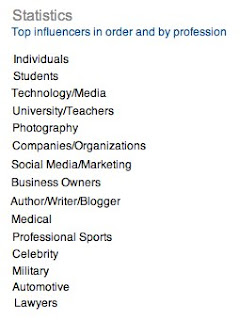It's January 2012. Facebook will have 1 Billion users in just a few months. Google just zoomed by 90 Million of it's own. Bloggers and writers are opining about Timeline, how to use G+ Hangouts, and trying to sort out what works and what doesn't for social business.
So, I decided to do a "test."
The purpose was simple: To compare the engagement levels by users on Google+ and Facebook.
DISCLAIMER: I am not saying that Facebook is dead, that Google+ is a savior, or anything related. Some are convinced that Google+ is for technical people (snobs and elitist) and Facebook is for "real" people. My goal is to just share what I have found. I wish I had theAPI data (hint, hint Google) so that I could show you more complete data and analytics, but I think you'll find this intriguing. For the record, on my Facebook page I am maxed out at 5,000 friends and on Google+ 13,378 have me in circles.
So here we go.
I took into consideration the potential arguments that would arise based on the content and user base of each platform. I agree that Google+ appears to be more technical in nature and that Facebook seems to focus on more simple or personal topics. Therefore, I chose to post something that was a) not technology oriented, or that 'would be perceived to favor the Google+ audience', b) was not about my puppy, which could be equally argued to favor 'the Facebookers', c) With the interface of Facebook Timeline and Google+ in consideration then, I chose a single picture, and a simple question that would be used similarly on both platforms, posted at the same time I committed to interact with both sets of people as they engaged.
Here are my findings - the numbers tell the story. (These snapshots were taken this morning, one right after the other)
First, engagement on Facebook was only 4% in relation to the engagement on Google+. Even taking into consideration that I have over twice as many "followers" on Google+ than on Facebook, that would still mean that the numbers would 92% to 8%. Advantage: Google+
Using Google+ Ripples, was helpful in analyzing 'how' the public posts migrate through the channel. Here's a snapshot on this specific public Google+ post:
Notice Sandra Parlow, Arleen Boyd, Jed Kim and CathiBea Stevenson stand out as the key amplifiers...
Drilling deeper, you'll see Sandra Parlow as the key amplifier, with 30,108 who have her in circles. It makes sense that she would be number 1 since she enjoys such a large audience.
One final statistic to note from my "test": Who were the most influential folks on Google+? Was it a bunch of technology chums of mine? Nope. Was it followers of CrushIQ? No. I was pleasantly surprised to see the engagers make up a very well rounded audience. The overwhelming majority on Google+ just interacting and getting to know other people. Nice!
Question that I have unanswered: Why is this? Are Google+ users starved for humanity? Is this why photographs are so popular on Google+? Are Facebook users beginning to tune out? Will this replicate? I don't have the definitive answers, yet. I am simply posting my findings and my genuine (knee jerk) response/surprise and leaving the interpretation and analysis to you.
Courtesy: Time Moore
+Tim+Moore+-+Google+.jpg)



